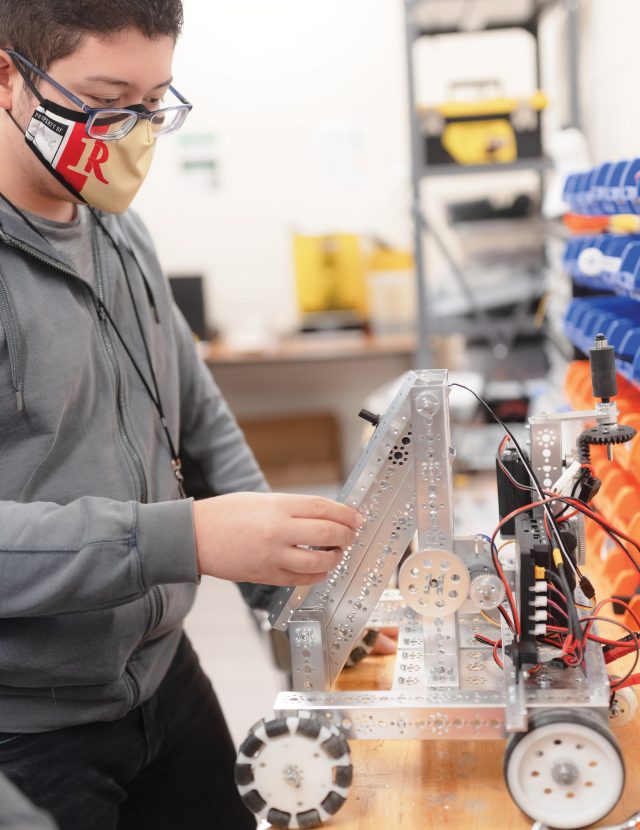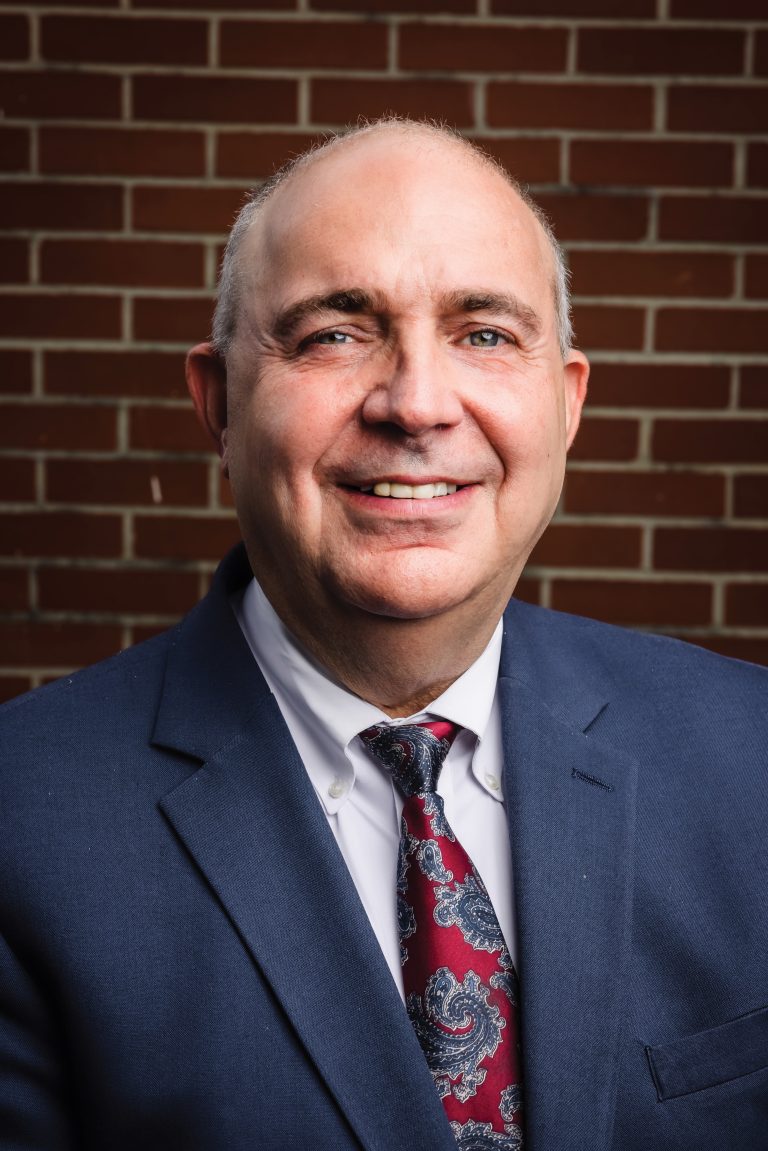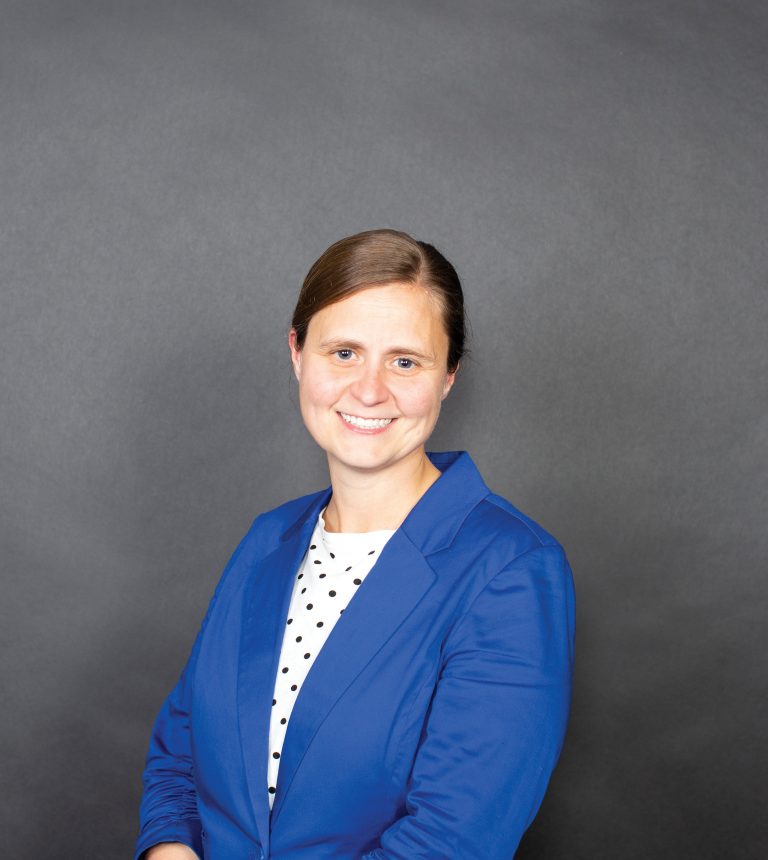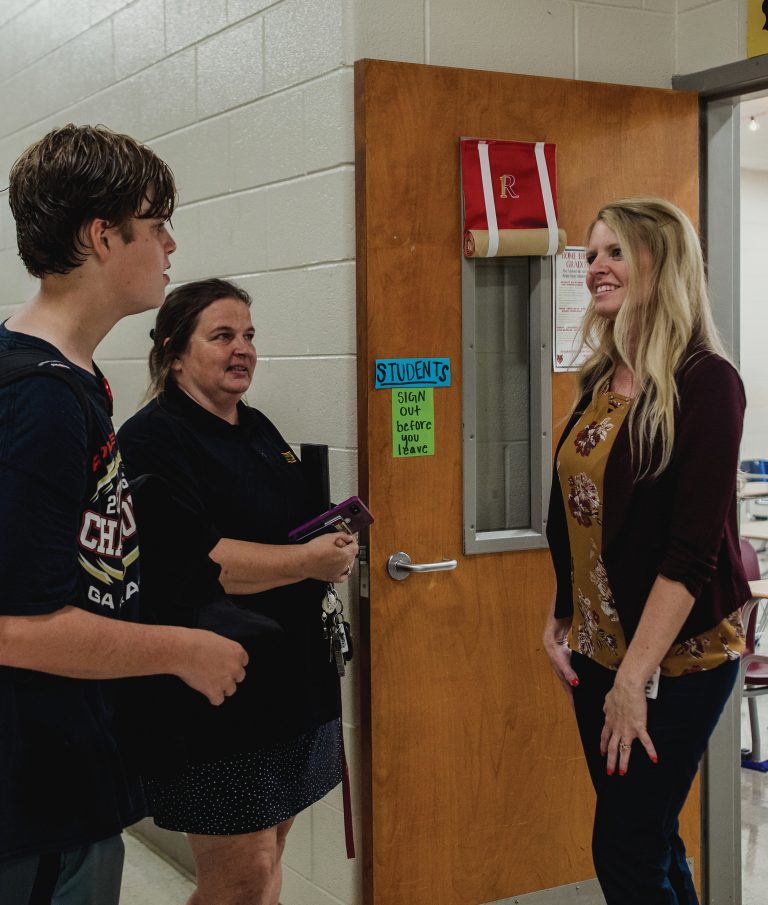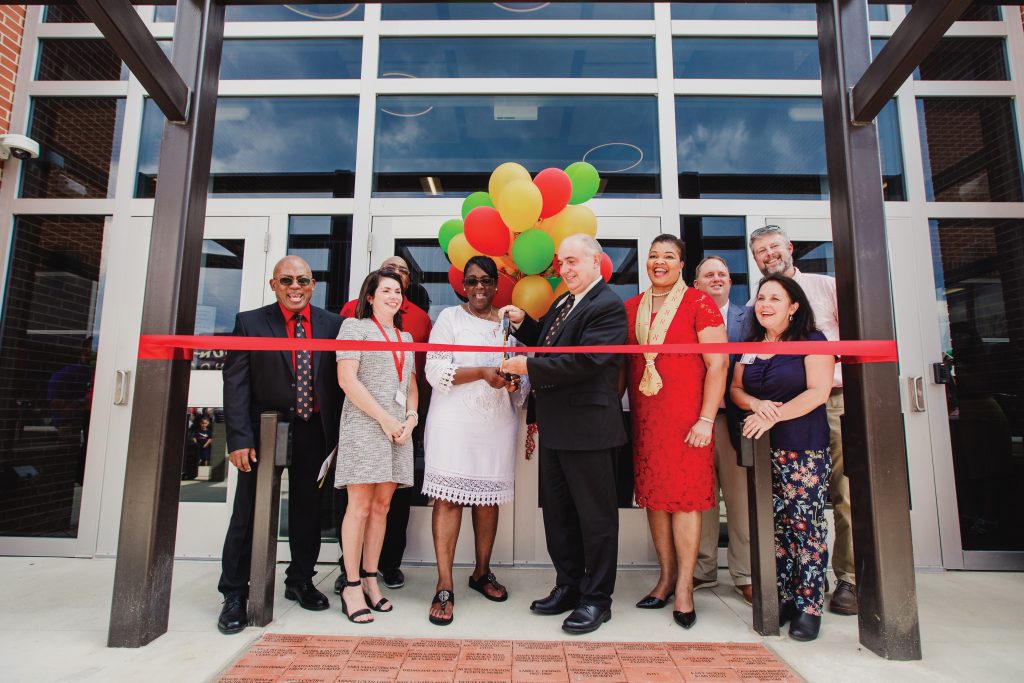
Photos Rob Smith
ONE RED CENT. Just a zinc disk with a thin copper shell. Doesn’t sound like much, but it means a lot when those pennies add up to improving the education of children. That’s where the E-SPLOST comes in. This acronym stands for Special Purpose Local Option Sales Tax for Education. This measure calls for a one cent sales tax on all retail purchases in Rome and Floyd County. The funds will go to various much-needed school projects in the city and county. This is not a new tax; there is an E-SPLOST in place right now. This new one will begin when the current one ends in 2024, and it will continue for the following four years.
The benefits to the local education system will be huge, but this new E-SPLOST is not a given. It must be approved by the voters. That vote will take place on May 24th.
From the grassroots up
Unlike many government initiatives which are driven from the top down, this E-SPLOST effort is powered largely by volunteers who see themselves as having a personal stake in the issue. Leadership comes from the co-chairs of the Central Committee: Trina Rohner (Rome City Schools) and Melissa Veillon (Floyd County Schools), as well as the treasurer, Bryan Shealy. Also, one representative from each school district sits on the Central Committee.
These committee members recruit an individual leader for each school, who in turn recruit school team leaders. These team leaders organize vote recruiters. At each level of this volunteer structure the same purpose is served: get out the vote. They do that through a host of means: social media, website, printed materials, organizing fundraisers, yard signs, speaking at various community organizations, etc.
Rohner says, “I have three children, and I’ve been highly involved in their schools over the years.” Rohner has been an enthusiastic parent volunteer for many organizations, and she is an all-in cheerleader for this new E-SPLOST. She goes on to say, “The way I see it, if you want to know what’s going on, you can’t just sit on the sidelines and gripe about it; you have to get involved.”
This is also a personal issue for Shealy, a retired banker and a former School Board member. He says, “My own kids are grown, but I have grandchildren now, and I want them to have the best schools possible. And I want the same thing for my future great-grandchildren and for the generations to come.”
Among Veillon’s motivations for promoting this E-SPLOST are the safety and comfort of all the students in the schools of Floyd County. For instance, she wants to see upgrades in the athletic facilities. She says, “Some of our athletes are getting hurt from running on tracks that are old and cracked.” Veillon also points out that there are rooms in some of the county schools that are uncomfortable during exceptionally hot or cold weather. “Right now,” she says, “we have children sitting in rooms that are not properly heated and cooled.”
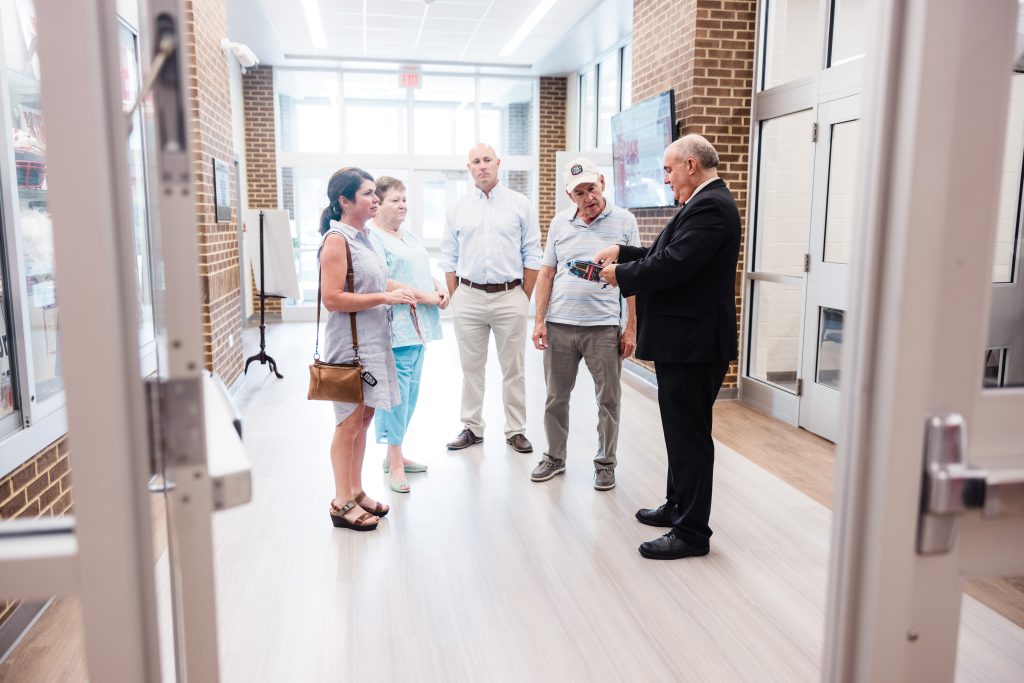
Putting those pennies to work
The big-ticket item for Rome City Schools will be a new middle school. Current plans call for the new school to be built on a 31-acre lot across the street from the present middle school (where the school buses now park). There’s no final decision yet on the future use of the present middle school after the transition; there are several options on the table, perhaps some sort of office space, but it will not be used as classrooms.
According to Louis Byars, superintendent for Rome City Schools, the construction of a new middle school will not only benefit the middle school students, but also the students and teachers of Rome’s six elementary schools. “With the new middle school,” Byars says, “we’ll be able to move all our sixth graders up, freeing up more room in the classrooms in the lower grades.”
This will head off overcrowding in the elementary schools as more people move to Rome. Right now, the average class size in Rome’s elementary schools is 17 students. Moving the sixth graders up will help maintain this ideal teacher/student ratio. “We try our best to keep the numbers low in our classrooms,” Byars says. “We want to be advocates for our students’ best education.”
“We’re a growing district,” Byars says, “and we’re adding students all the time.” New subdivisions are popping up around Rome on a regular basis, with more to come. For instance, Byars estimates that the 1,000 new homes planned for Chulio Road could add as many as 500 new students to the district. And that doesn’t take into account all the other new housing going up around the city. “Rome is a great place to live, and people want to come here,” Byars says, “and this new middle school will help us get ahead of the curve on the population growth.”
Also, Byars explains that in the new middle school each grade—sixth, seventh, and eighth—will have its own dedicated wing. “Right now,” he says, “we have some students meeting in mobile classrooms at the present middle school. We need more room. It’s time.”
As for Floyd County, the current E-SPLOST funds make a huge difference in the quality of every student’s educational experience. The new E-SPLOST will provide various county schools with facility upgrades: replacing heating and air conditioning and doing field house renovations. The elementary schools will get canopies for car riders’ drop-off areas. Different schools will get new technologies: cameras, phone systems, intercoms, etc. The auditoriums will be equipped with new lights and sound. All county high school baseball/softball fields will get lighting. Turf and synthetic tracks will be laid.
A cautionary tale
Veillon says, “My husband’s aunt was a lunchroom manager over nine different schools in Louisiana. Every time she comes to Rome, she says, ‘I am so jealous of your schools.’ She says our worst school is better than their best school.”
Clearly, the kind of commitment to supporting public schools that is found in Rome is not universal. Case in point: Ville Platte High School, of Ville Platte, LA. When the school was built in 1885, it was a one-story building (then known as Evangeline Academy). As the community grew, rather than build a new school, the old building was expanded (upward); a second story was added in 1908, then a third story came along in the 1940s.
As the old building aged, there were few funds for renovations and repairs. In time, this school became so dilapidated it became the subject of persistent paranormal legends and local lore, even being featured in a volume of the book series Ghosts of America. In 2008, the U.S. Justice Department urged closure of the school due to its deteriorating facilities. Still, public apathy continued, and students kept attending the run-down school. When a tax increase was finally purposed for a new school, voters rejected it three times in a row.
Veillon and her fellow volunteers are determined to prevent such a thing from ever happening here. Veillon says, “We’re trying to make it so the E-SPLOST benefits every school in the county.”
Many students who grew up in the Floyd County area and then moved away, have become painfully aware that community commitment to local education is not always enthusiastic elsewhere. Rohner says, “I have a son who’s about to graduate from Jacksonville University. While doing student teaching [in band] in an out-of-state district, he took a short break to come work with Rome City students. He wanted to regain his focus on Rome’s organization, structure and discipline. We really have something special here, and many people don’t know it.”
Getting the word out
Financially speaking, a big plus for Rome and Floyd County is that about 40% of the E-SPLOST dollars come from people who travel here but do not live here. “A lot of this is funded by commuting workers and tourists,” Rohner says. “People come to watch the Rome Braves or visit the Rome Tennis Center; they spend their money and go home.” Veillon agrees: “These people spend money here and help us build our schools. Without E-SPLOST, the only place the money can come from is property owners.”
Shealy says, “Having served on the School Board, I saw funds come and go—for school buses, for building maintenance—and the millage rate [property tax rate] can only go so far. There are laws that cap the property tax.” Veillon explains, “90% of the Board of Education’s budget pays for the salaries of teachers and staff. That only leaves 10% to cover all the other operating expenses: utilities, water, gas, electricity. It’s not enough.”
Up to this point, the Central Committee has expended tremendous effort and energy to make the public aware of this vital upcoming vote. “I’ve been surprised at how many people who have no idea what E-SPLOST is,” Veillon says. “And this is a very big deal. Very big! So, it’s our job to get the word out about what E-SPLOST is and why it’s so important.” On May 24th the voters will decide its fate.
Read more at: www.rcs.rome.ga.us/page/esplost-education-special-purpose-local-option-sales-tax






